
-
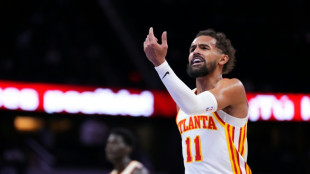 NBA Hawks lose guard Young for four weeks with knee sprain
NBA Hawks lose guard Young for four weeks with knee sprain
-
50 dead as Caribbean digs out from Hurricane Melissa

-
 Forever Young gives Japan first Breeders' Cup Classic triumph
Forever Young gives Japan first Breeders' Cup Classic triumph
-
Mbappe's Real Madrid extend Liga lead, Villarreal move second

-
 Salah savours 'great feeling' after 250th Liverpool goal
Salah savours 'great feeling' after 250th Liverpool goal
-
Ethical Diamond surges to upset win in $5 million Breeders' Cup Turf

-
 Kinghorn kicks Toulouse to Top 14 summit
Kinghorn kicks Toulouse to Top 14 summit
-
Mbappe extends Real Madrid's Liga lead in Valencia rout

-
 All Blacks sink 14-man Ireland 26-13 in Chicago Test
All Blacks sink 14-man Ireland 26-13 in Chicago Test
-
World champ Malinin takes lead at Skate Canada

-
 Liverpool snap losing streak as Salah hits 250 goals in Villa win
Liverpool snap losing streak as Salah hits 250 goals in Villa win
-
Salah's 250th Liverpool goal sinks Villa as Arsenal cruise at Burnley

-
 Morant suspended by Grizzlies after rebuking coaching staff
Morant suspended by Grizzlies after rebuking coaching staff
-
Spalletti begins Juve tenure with win at Cremonese but Napoli held
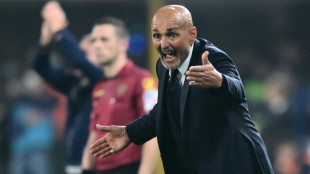
-
 Frank refuses to condemn Van de Ven, Spence for snub in Spurs defeat
Frank refuses to condemn Van de Ven, Spence for snub in Spurs defeat
-
France superstar Dupont extends Toulouse deal
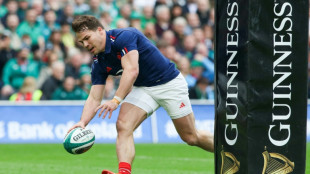
-
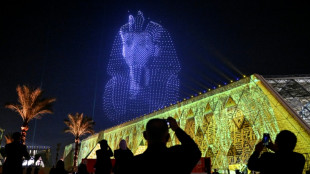 Egypt officially opens grand museum near pyramids
Egypt officially opens grand museum near pyramids
-
French fraud watchdog reports Shein for 'childlike' sex dolls

-
 Scotland thrash USA before All Blacks' clash
Scotland thrash USA before All Blacks' clash
-
Five things to know about the Grand Egyptian Museum

-
 Bayern rest stars but ease past Leverkusen before PSG clash
Bayern rest stars but ease past Leverkusen before PSG clash
-
Dead quiet: Paris Catacombs close for renovations

-
 Families separated, children killed as survivors flee Sudan's 'apocalyptic' El-Fasher
Families separated, children killed as survivors flee Sudan's 'apocalyptic' El-Fasher
-
Napoli held by Como as Spalletti begins Juve adventure

-
 Southampton boss Still vows to fight on as pressure mounts
Southampton boss Still vows to fight on as pressure mounts
-
Borthwick hails 'ball of energy' Pollock as England down Australia

-
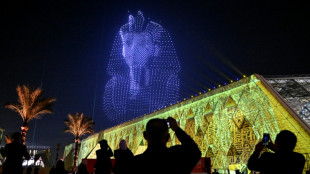 Egypt opens grand museum in lavish, pharaonic ceremony
Egypt opens grand museum in lavish, pharaonic ceremony
-
Joao Pedro strikes at last as Chelsea edge past Spurs

-
 Ohtani to open for Dodgers in World Series deciding game seven
Ohtani to open for Dodgers in World Series deciding game seven
-
Understrength Bayern sail past Leverkusen before PSG clash

-
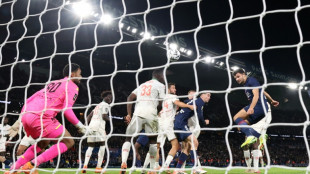 Ramos header earns PSG late win over Nice
Ramos header earns PSG late win over Nice
-
Arteta hails Arsenal's 'exceptional' first half as leaders sink Burnley

-
 Two more suspects charged over Louvre heist
Two more suspects charged over Louvre heist
-
More than $2 mn in weapons seized in deadly Rio anti-drug raid: govt

-
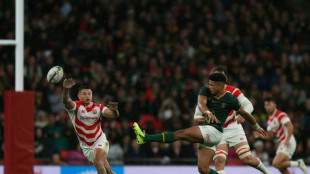 Feinberg-Mngomezulu guides South Africa to big win over Japan
Feinberg-Mngomezulu guides South Africa to big win over Japan
-
Pollock shines as England eventually overpower Australia

-
 Villarreal crush Rayo to move second, Atletico beat Sevilla
Villarreal crush Rayo to move second, Atletico beat Sevilla
-
Sinner crushes Zverev to reach Paris Masters final, brink of No. 1
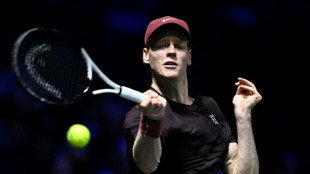
-
 Pollock shines as England beat Australia in Autumn opener
Pollock shines as England beat Australia in Autumn opener
-
Ukraine sends special forces to embattled eastern city

-
 Arsenal cruise against Burnley as Man Utd held
Arsenal cruise against Burnley as Man Utd held
-
Pollock shines as England beat Australia 25-7 in Autumn Nations Series

-
 Gyokeres on target as leaders Arsenal beat Burnley
Gyokeres on target as leaders Arsenal beat Burnley
-
Woman charged over Louvre heist tears up in court

-
 Diomande dazzles as Leipzig go two points behind Bayern
Diomande dazzles as Leipzig go two points behind Bayern
-
Auger-Aliassime downs Bublik to reach Paris Masters final

-
 Villarreal crush Rayo to move second in La Liga
Villarreal crush Rayo to move second in La Liga
-
Female suspect, 38, charged in Louvre heist: AFP

-
 US not sending any high-level officials to COP30
US not sending any high-level officials to COP30
-
India captain Kaur sees World Cup final as possible turning point


In Senegal, the last of Dakar's 'bubble homes' at risk
Marieme Ndiaye emerged from her igloo-shaped home in Senegal's capital, its 1950s space-age aesthetic in sharp contrast with the boxy, multi-storey apartments being built nearby.
The little concrete house is a head-turner, seemingly better suited for a sci-fi movie than the average Dakar residential block where it is located.
In the 1950s, around 1,200 of the tidy little homes were built in several neighbourhoods across Dakar to alleviate a post-World War II housing crunch.
The dwellings were made by inflating a giant balloon and spraying it with a concrete solution called gunite, before then deflating the balloon.
Row after row of the light-coloured domes, which could be constructed in just 48 hours, quickly sprung from the brown Sahelian landscape.
Designed by a California architect; implemented by French colonial authorities; lived in by Senegalese -- the dwellings saw only lukewarm success.
Senegal's traditionally non-nuclear, multi-generational families began outgrowing the homes' small, circular confines quickly.
In addition, the land beneath them soon became more valuable than the odd little bubbles themselves.
These days, only around 100 are estimated to remain, according to Dakar architect Carole Diop, with the majority having fallen victim to rampant urban development.
"When I was little, we only had balloons," Ndiaye said, referring to the area where she grew up and lives today in Dakar's central Zone B neighbourhood.
Without historical societies or architectural organisations campaigning to preserve the homes, the remaining residents have become the little igloos' principal protectors.
"Now we're in the middle of destroying the balloons, of transforming," Ndiaye told AFP.
"For me, it's sentimental," said the 65-year-old retiree, who is the reason her dome house is still standing. "My younger brothers want to tear down the ballon and build," she said.
The balloon homes are being preserved by residents for a variety of reasons, Diop told AFP.
But "unfortunately, many families who had the means ended up demolishing the balloon to build a building", she added.
- 'Very atypical' -
Many of those remaining have been transformed to better fit Senegalese life and no longer exist as solitary bubbles.
With an average diameter of just six metres (20 feet), a standard bubble house like Ndiaye's would have consisted of a bedroom, living room and bathroom, according to Diop.
"Many families adapted and found ways to meet the need for expansion", such as building an attachment, she said.
Ndiaye's house, first bought by her father in the 1950s, is now enveloped inside her family's larger compound, where she lives with about half a dozen relatives spanning multiple generations.
The bubble house is in the middle of a square courtyard, with other rooms along the courtyard walls.
While the bubble homes can become warm in the direct sun, even with a vent on top, Ndiaye said hers was comfortable.
A 10-minute walk away, Sekouna Yansane recently built a large house next to the bubble home his father bought in the 1950s, incorporating it as a room jutting off one side.
Describing himself as artistic, he was loath to allow the little dome to fall into developers' hands.
"It's very atypical, I love it," the 65-year-old said. "It reminds me of when I went to Mongolia, the yurts."
Four years ago he began constructing the larger home, while his next-door neighbours tore their bubble house down.
Along the street, a towering and decidedly non-descript apartment building looms where bubble houses no doubt once stood.
"Why destroy them? They are things we should keep," Yansane said, adding that a good house always has "character".
- In 100 years -
American architect Wallace Neff, who invented the bubble house, was best known for his Spanish colonial revival homes and residences for major Hollywood stars like Judy Garland and Groucho Marx.
Yet, he believed the bubble homes, which were constructed in several countries, were his most significant contribution to architecture.
Asked whether she thought the homes would still exist in 100 years, Diop voiced doubts.
"At the pace at which the city is densifying and evolving, I think unfortunately in 100 years there will be no more ballons," she said, but expressed hope that if classified or transformed for preservation, some might survive.
Yansane was slightly more positive.
"I'm in favour of preserving things," he said, adding: "In 100 years, this house, if it still exists, it's going to be something extraordinary."
J.Sauter--VB
